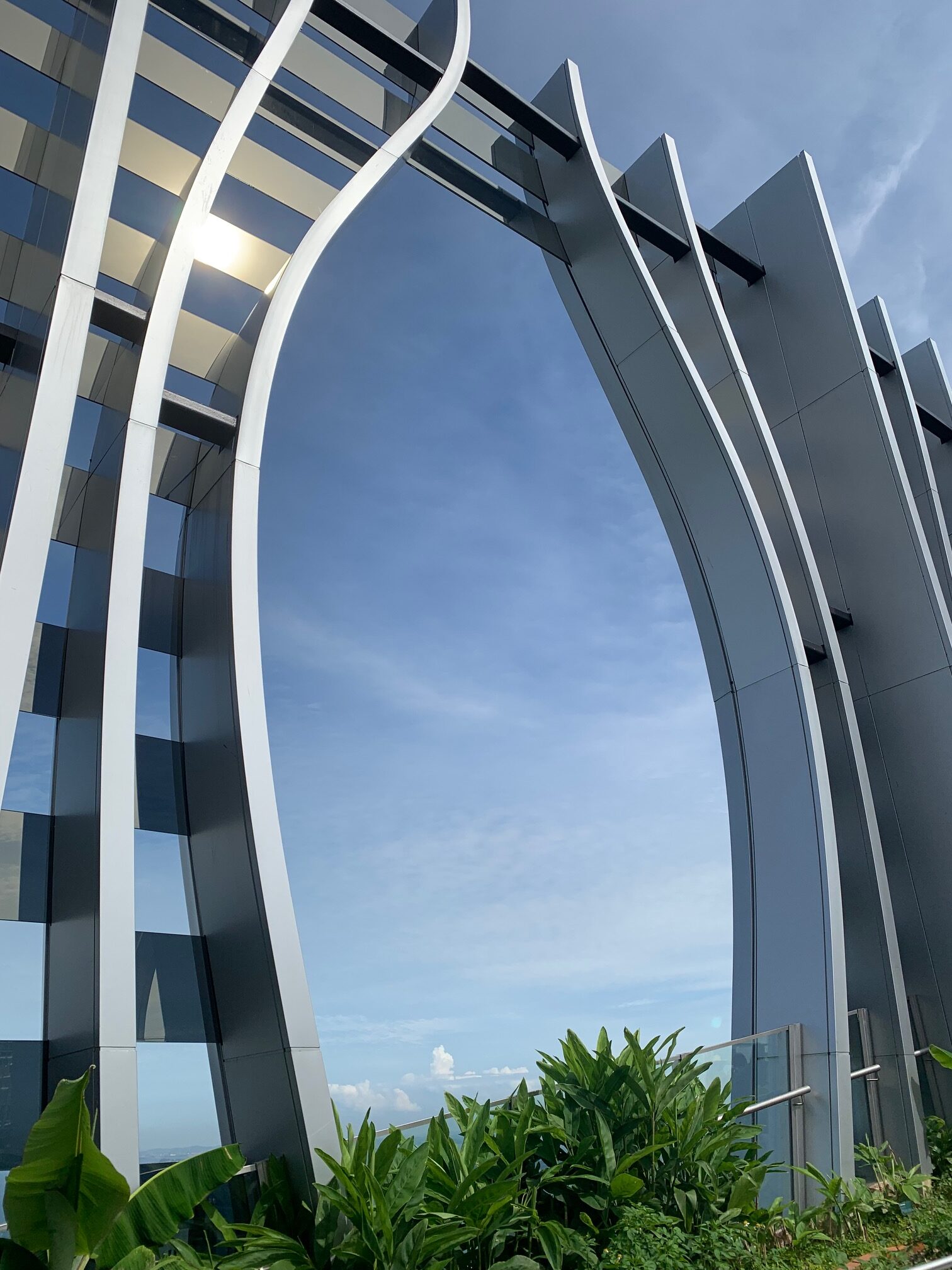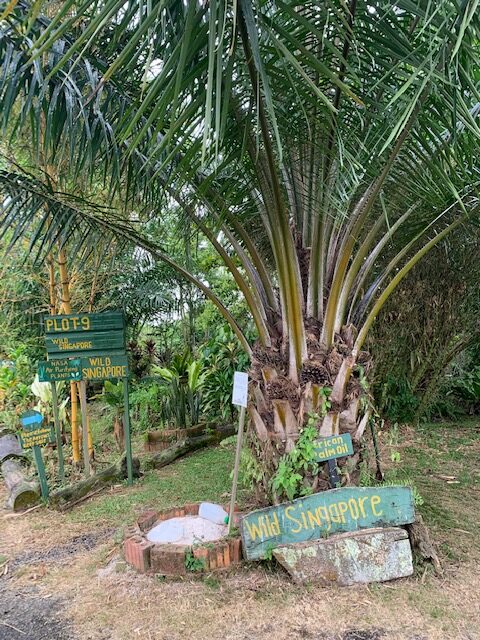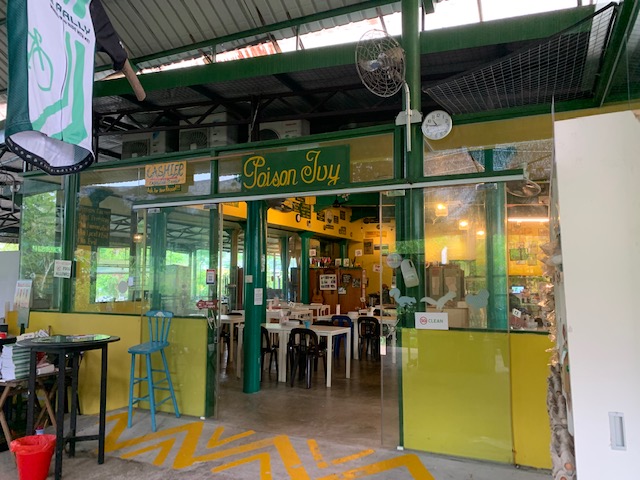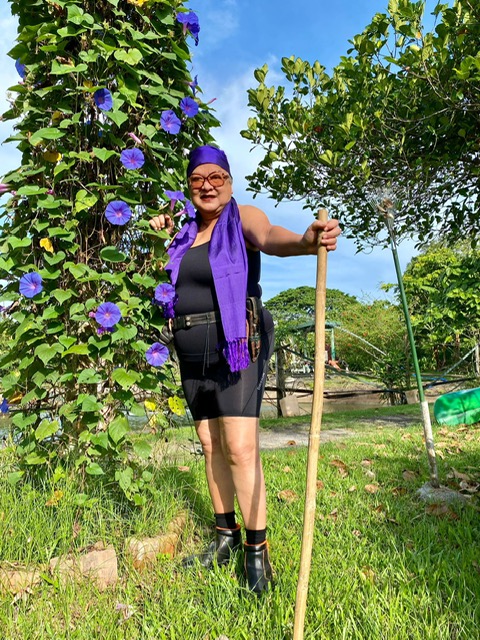There are sweet potatoes overlooking Citibank.
On the 51st floor of the CapitaSpring building in Singapore’s central business district a grass ceiling of crazy paving and edible crops turns the top of the commercial high-rise into a salad of fresh greenery. Below the starfruit, Brazilian spinach and Daikon radish, office blocks and vibrant shipping containers line the Lion City’s busy harbour.
Singapore’s latest urban agriculture venture, a project by food security movement Edible Garden City, became the world’s highest farm on its May launch, toppling Paris’s Expo Porte de Versaille from the podium. Since then, the U.K. has already announced plans to enter the edible rooftop race with a proposed Bristol project that would tower over both Singapore and France’s efforts.
“People gravitate towards interesting spaces,” said Sarah Rodriguez, head of marketing at Edible Garden City. “While many people visit to see the plants and to learn about urban farming, there are also… visitors who go for the ambience or the view.”
To tackle increasingly urgent food security and sustainability concerns, innovators in the Red Dot are taking agriculture to new heights. The city-state is capitalising on its status as a regional innovation leader to bring farming into the future. But amidst high-tech projects and cosmopolitan developments, traditional farms risk being left behind.
As CapitaSpring welcomed its first visitors, reports of export bans and disrupted food supply chains spread through Southeast Asia. Indonesia, the world’s top supplier of palm oil, launched a three-week ban on exports of the product on 28 April in an attempt to stabilise cooking oil prices. A month later, Malaysian Prime Minister Ismail Yaakob announced a curb on chicken exports from 1 June, causing concern in neighbouring Singapore, which imports a third of its poultry from Malaysia.



From right to left: a view from Edible Garden City’s latest CapitaLand farm, a gardener tends to plants on the rooftop farm, edible herbs and plants fill the beds in CapitaLand’s urban farm
Food security is not a new issue for Singapore. Currently dependent on imports for more than 90% of its food, the government’s ‘30 by 30’ initiative aims to produce 30% of the country’s nutrition locally by 2030. But recent bans on exports and upended supply chains due to the Ukraine-Russia conflict have added an increased sense of urgency.
“Recent events have really shown how vulnerable Singapore can be if there are disruptions to supply chains,” said Paul Teng, adjunct senior fellow in the S. Rajaratnam School of International Studies at Nanyang Technological University Singapore. “Not just in terms of the actual food commodities themselves, but also in terms of peripherals [such as] rising fuel prices.”
In the meantime, the public sector is stepping in with new grants and opportunities for commercial farmers. These include the Agri-food Cluster Transformation (ACT) Fund, which provides support for farms looking at innovation and test-bedding and technology upscaling. The first Agri-Tech Career Conversion Programme was launched in early 2022, designed to train the nation’s workforce in skills including Smart Farming and Internet of Things technology.
Some of the city-state’s urban farms have already embraced innovation. Edible Garden City’s first Singapore project, CapitaSpring’s sister farm on top of the nearby Funan Mall hosts an aquaponics pond where nutrient-dense water from the resident fish is filtered and used to water the neighbouring plants.
But behind the hype, Teng is sceptical about the long-term benefits of urban, high-tech farms.
“Even though there’s a lot of talk about sustainability, the green plan, and so on, many of our farming practices, especially high-tech farming practices have yet to be proven sustainable,” he said.
Many traditional farmers lack not just the resources but also the mindset and inclination to upscale using new, expensive technologies. Meanwhile, as Singapore remains far from its 30 by 30 goals, innovators in alternative proteins and lab-grown meats are hungrily working to capitalise on its terms, which, as Teng notes, refer to general nutrition, not just organic foodstuffs.



From right to left: a plot of exotic and edible plants at Bollywood Farms welcomes visitors to ‘Wild Singapore,’ the Asian Vegetable Garden at Bollywood Farms, the entrance to Bollywood Farm’s Poison Ivy bistro, which serves dishes made from local produce
On the opposite side of the diminutive island, approximately 33 kilometres (20 miles) from CapitaSpring’s manicured soil beds, greenery sprawls across a 10-acre (4-hectare) estate. The land is divided into 12 plots, hosting Malaysian pomelo, Bangladeshi bananas and local Singaporean kangkong and grass-green and lemon-yellow signposts marking “ASEAN “compost” or “Wild Singapore.” Near the entrance, an open-air bistro named Poison Ivy serves dishes made with the farm’s produce.
“You can eat all plants,” said the farm’s co-founder and landowner, Ivy Singh-Lim. “Some you can only eat once.”

Bollywood Farms was founded in 2000 by Lim Ho Seng, former CEO of a Singaporean retail behemoth, and his wife, landowner and former business development leader Singh-Lim. The couple’s retirement project was launched to create a sustainable ecosystem of food produce.
For the landed couple, agriculture may be an easily affordable investment, but the reality for most agricultural workers is markedly different. The average farmer’s wage in Singapore is SGD 2,444 ($1,772), a little more than half the country’s average monthly income of SGD 4,680 ($3,394).
“Farmers need to be incentivised,” Teng said.
When Singapore became an independent nation in 1965, farming was thriving. Vegetable production filled 50% of local demand. Pork was produced at a small surplus for export. Low labour costs boosted overall returns and the sector was a valuable contributor to the national economy.
But a report released shortly after independence revealed the strains beneath the success. Nearly all farms were small, family-based operations where the owners had less than four years of schooling and lacked the capital and resources to upscale or remain profitable.
Concerns emerged over the pollution and environmental damage caused by pig farming. By the 1970s the government had turned its attention to modernising the workforce and agricultural sector through technology.
“The government made a very conscious policy effort to downplay the role of agriculture and restrict the… amount of land [and] human resources to diversify the economy in the 1980’s,” Teng said. While urbanisation boosted the national GDP, agricultural professionals faced challenges.
Around 1% of Singapore’s 720 square kilometres (278 square miles) is dedicated towards agriculture and traditional farms are only permitted to be built in approved designated areas. Farmers apply for land tender and a licence from the Singapore Food Agency, the statutory board responsible for managing urban agriculture. Subsequent approvals from various other government entities are also required, including the Urban Redevelopment Authority, the Land Transport Authority and the National Environment Agency.
“The government is not giving you land free of charge and smallholder farmers can’t really afford to borrow,” Teng noted.
Rodriguez noted fuel and food price inflation highlight the brokenness of Singapore’s food system where imported produce, often grown with chemical intervention, is more accessible than organic, locally grown food. “The solution is a self-sustaining local food system, decentralised, run and owned by the community,” she said.

Singh-Lim finds the current siloed structure and the lack of expertise in the public sector frustrating and a barrier to farmers supporting their businesses through supplementary income, such as restaurants.
“It took me one year to quarrel with the bastards in the agriculture department [to build my farm],” she recalled.
When Bollywood Farms was established, management fell under the purview of the Agri-Food and Veterinary Authority, a statutory board that was disbanded in 2019 and its duties split. A 2004 decision to incorporate a restaurant required a separate licence application under a new government board.
“When I applied for change of use, it threw a whole spanner in the works… they almost fainted,” she said wryly. “In the UK, they knew that small farming was not profitable, so that’s why they incorporated Bed & Breakfasts. They knew what was growing was leisure.”
High-tech urban farms are exempt from the land restrictions. Many of those operations, including Edible Garden City’s Funan and CapitaSpring entities, are directly linked with upmarket restaurants serving their produce and helping raise awareness of farm-to-table eating amongst discerning Singaporean diners.
“Working with talented culinary teams is important for farmers to reach out to even more people,” Rodriguez said. “The way to the hearts of Singaporeans is through our stomachs.”
Singh-Lim believes that farming should be accessible and visible, not just on Singaporeans’ plates but also in their everyday lives. High-rise rooftop farms should be reserved for specific solar and water-collection projects. Communal allotments and aquaculture ponds could be incorporated around each of the 1.09 million public housing units built by the Housing Development Board.
“We should convert every piece of land into a sustainable, useful, productive garden,” she said. “People say that we have no land. We have plenty of land. But think about this: 1% of land is for agriculture, 15% is for the military.”
The future of farming relies on a balance between the agri-tech and traditional methods. Innovation is there to bolster awareness of natural sustainable farming practices, according to Rodriguez.
“We need to strengthen the entire ecosystem of farming in Singapore, from training and development to partnerships and awareness,” she said.
Teng said many countries face a policy dilemma of whether to support small farms or more productive, high-tech operations: “Singapore is very focused on productivity and efficiency, but our country will be poorer off if we don’t have a countryside with small, conventional farms,” he said.
For Singh-Lim, the logic and the solution are simple: Singapore’s farming methods may be divided but their ultimate goal is the same.
“Grow local. Eat local. Eat less. Waste less,” she said.
Photos by Amanda Oon for Southeast Asia Globe


